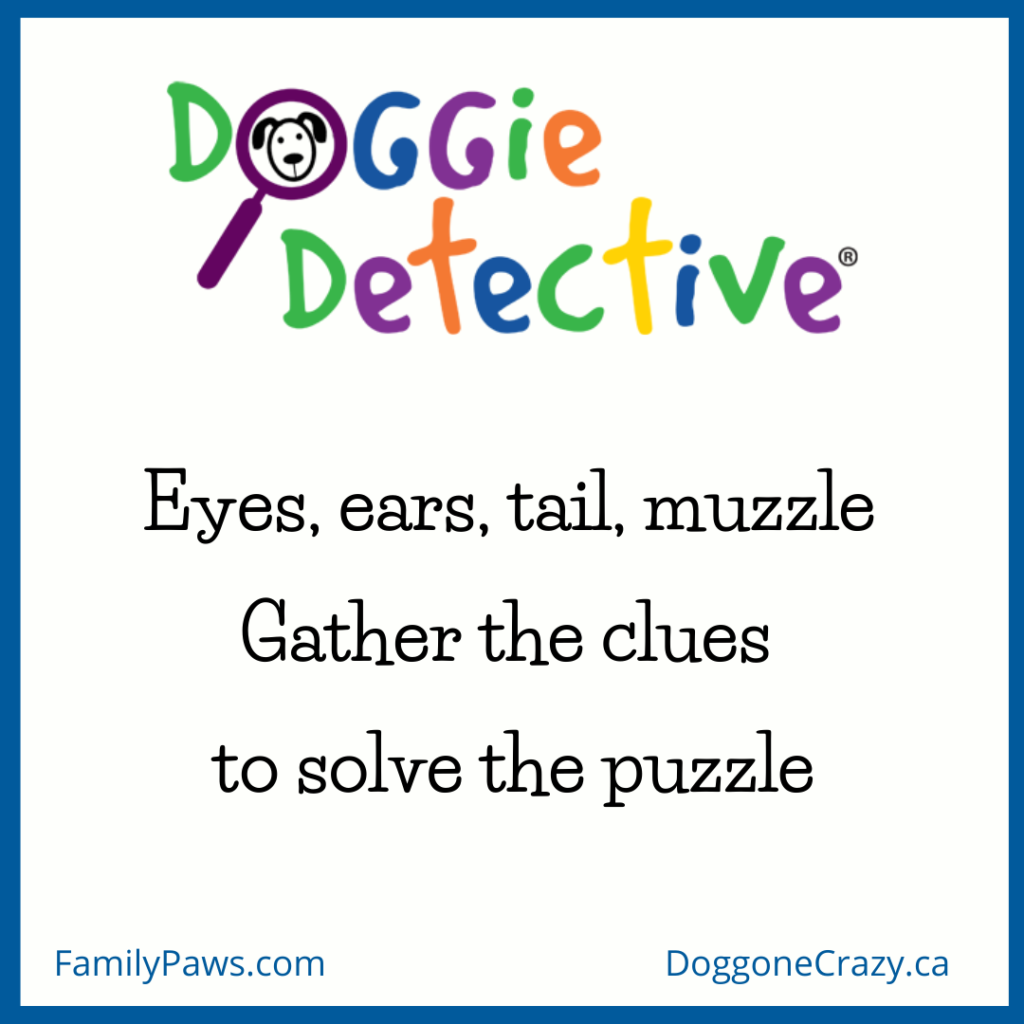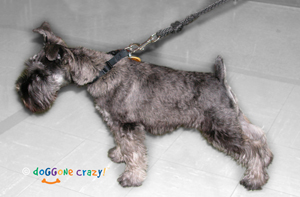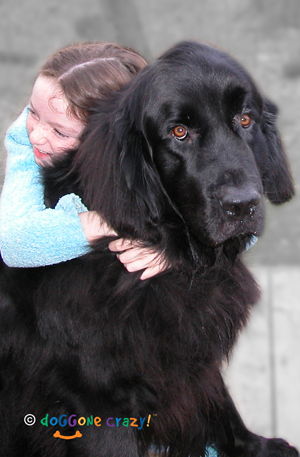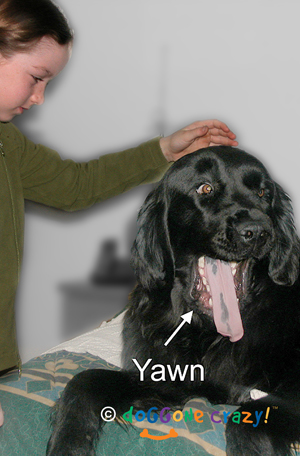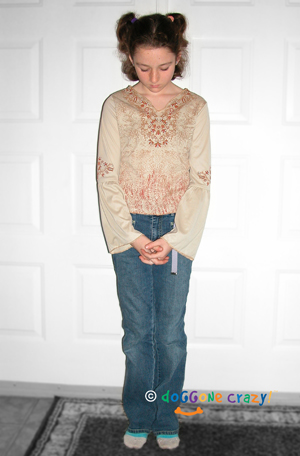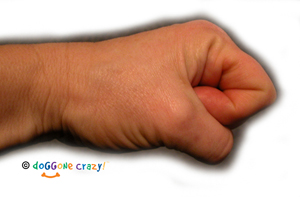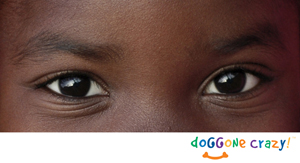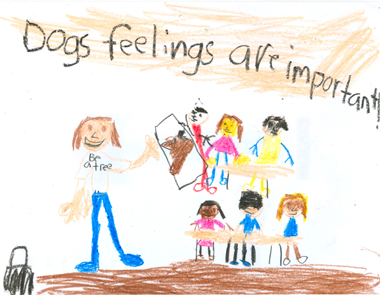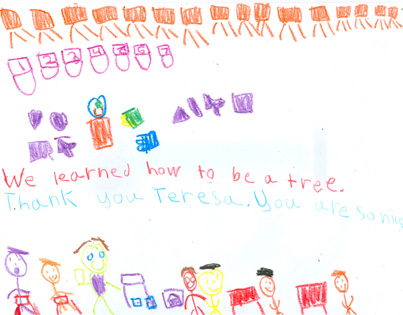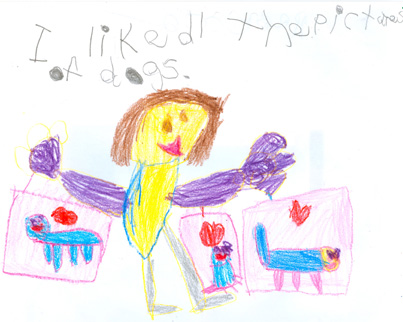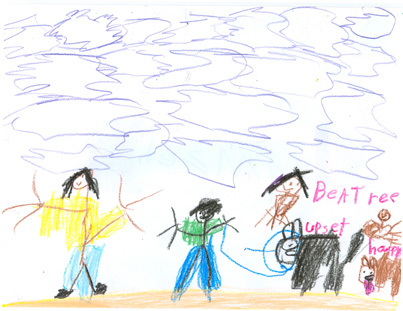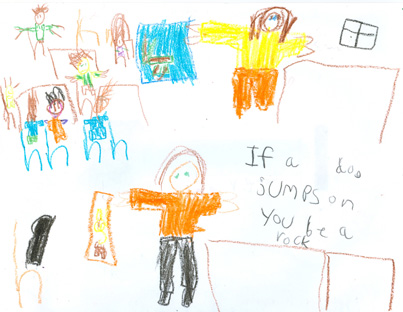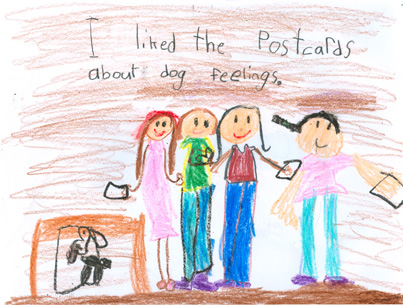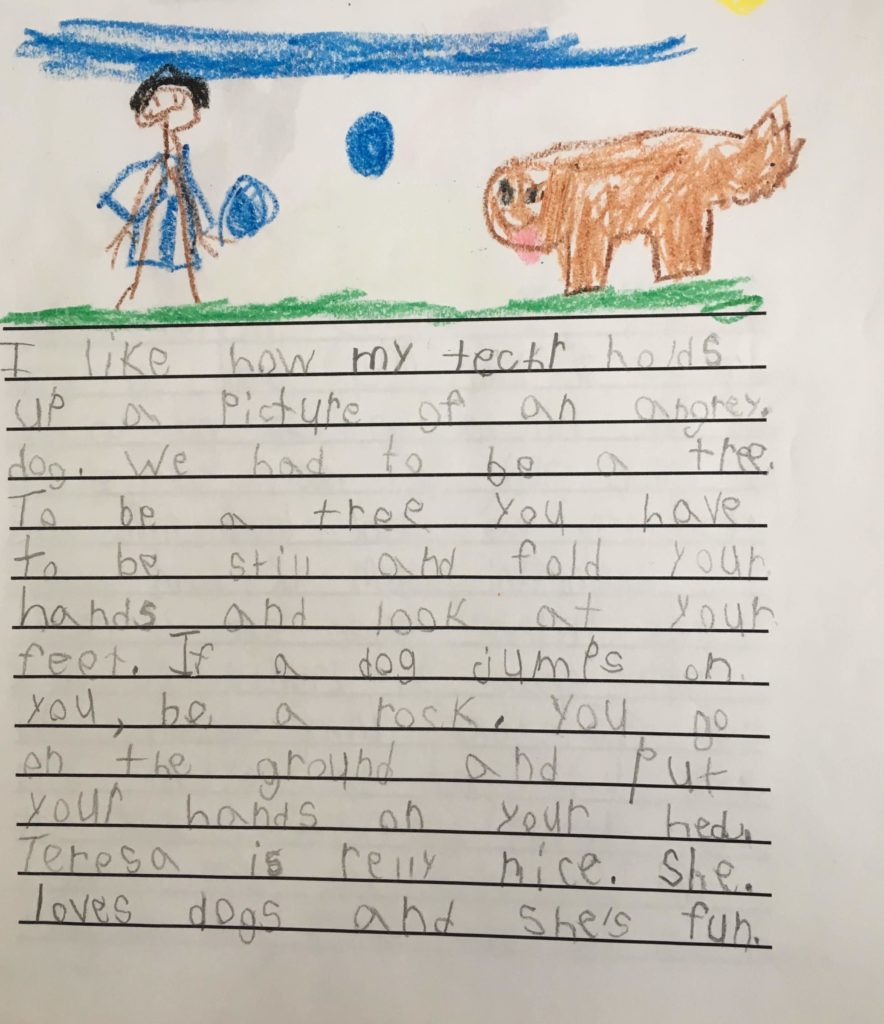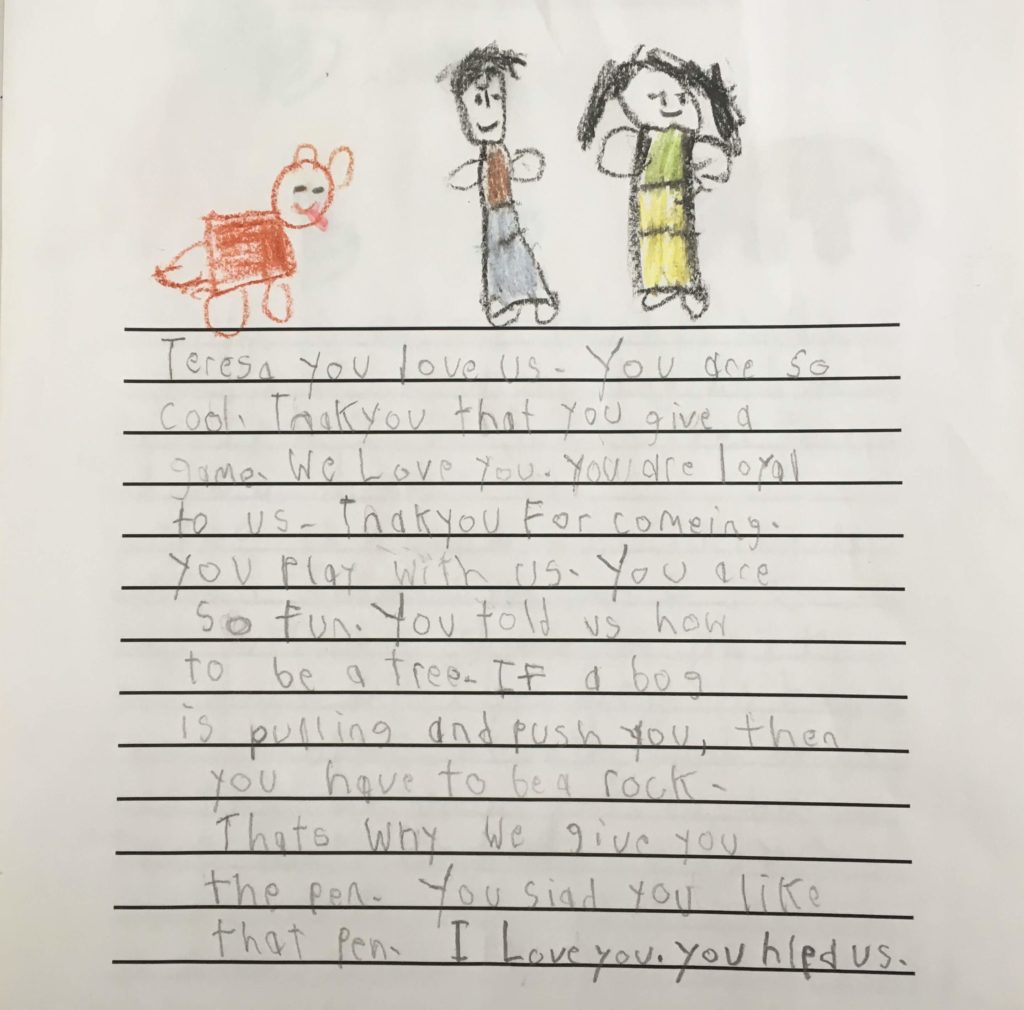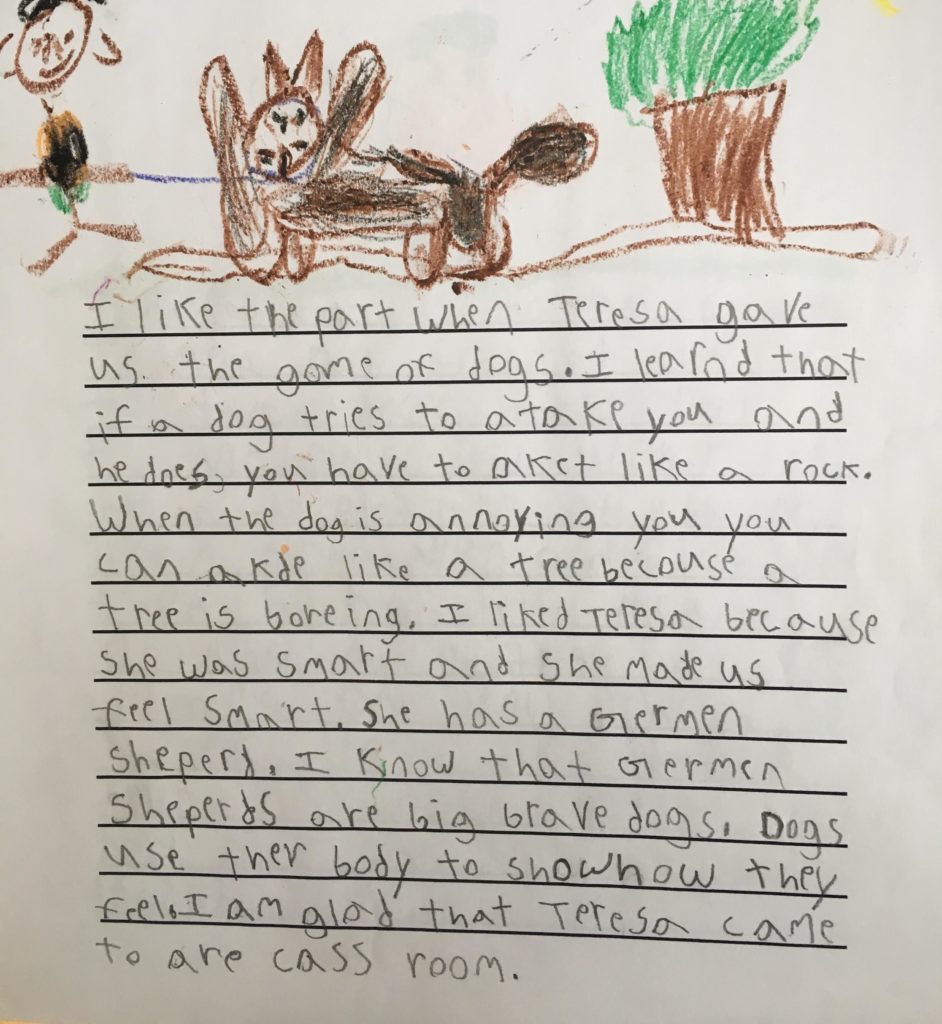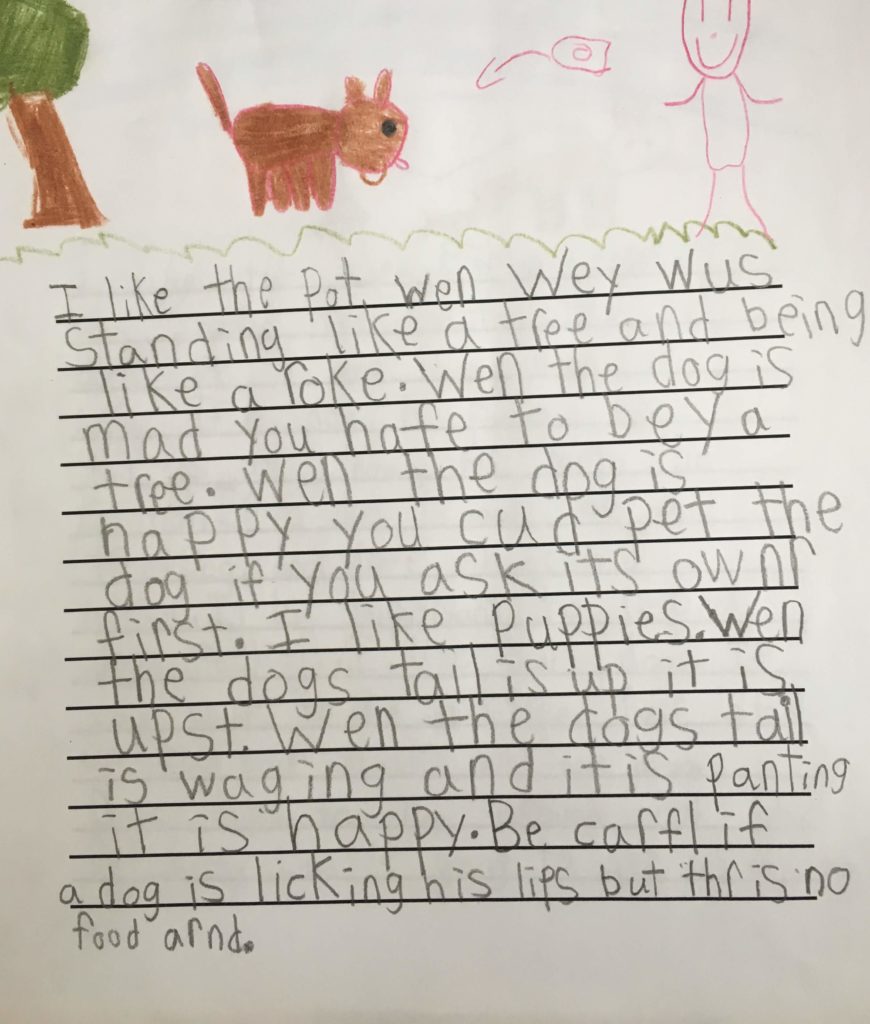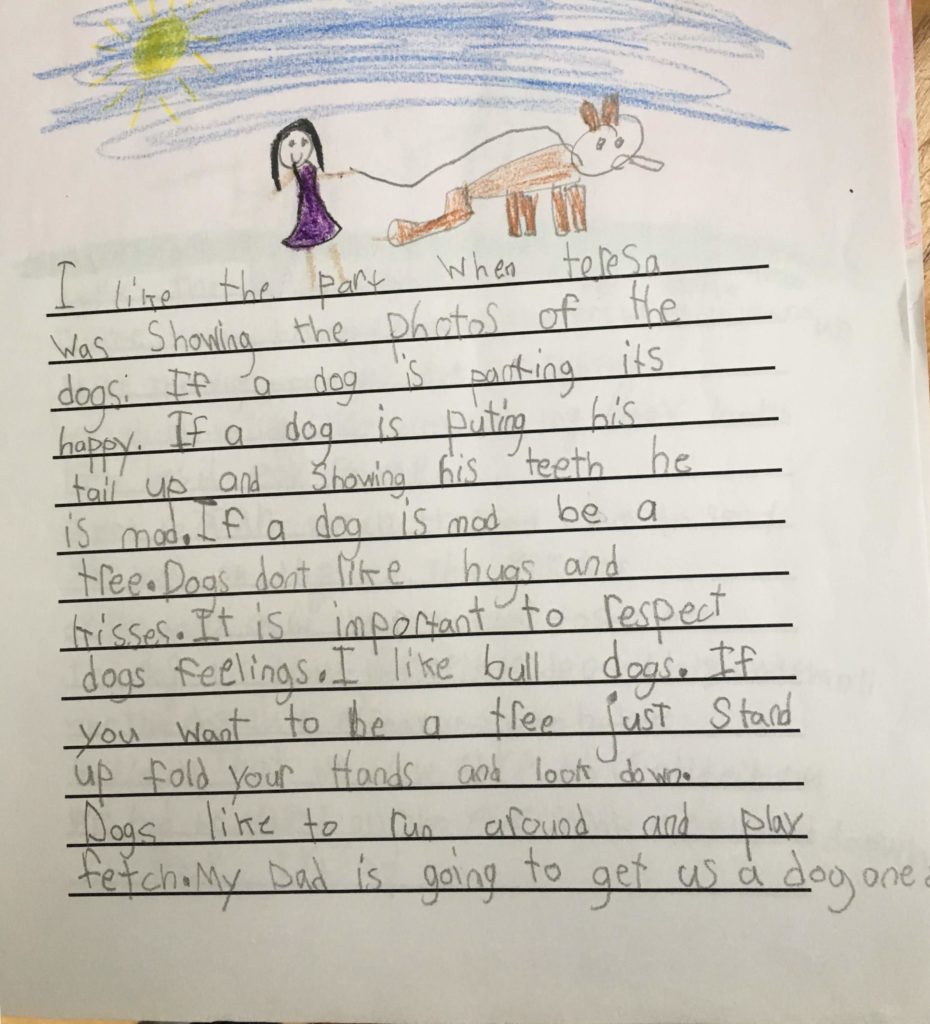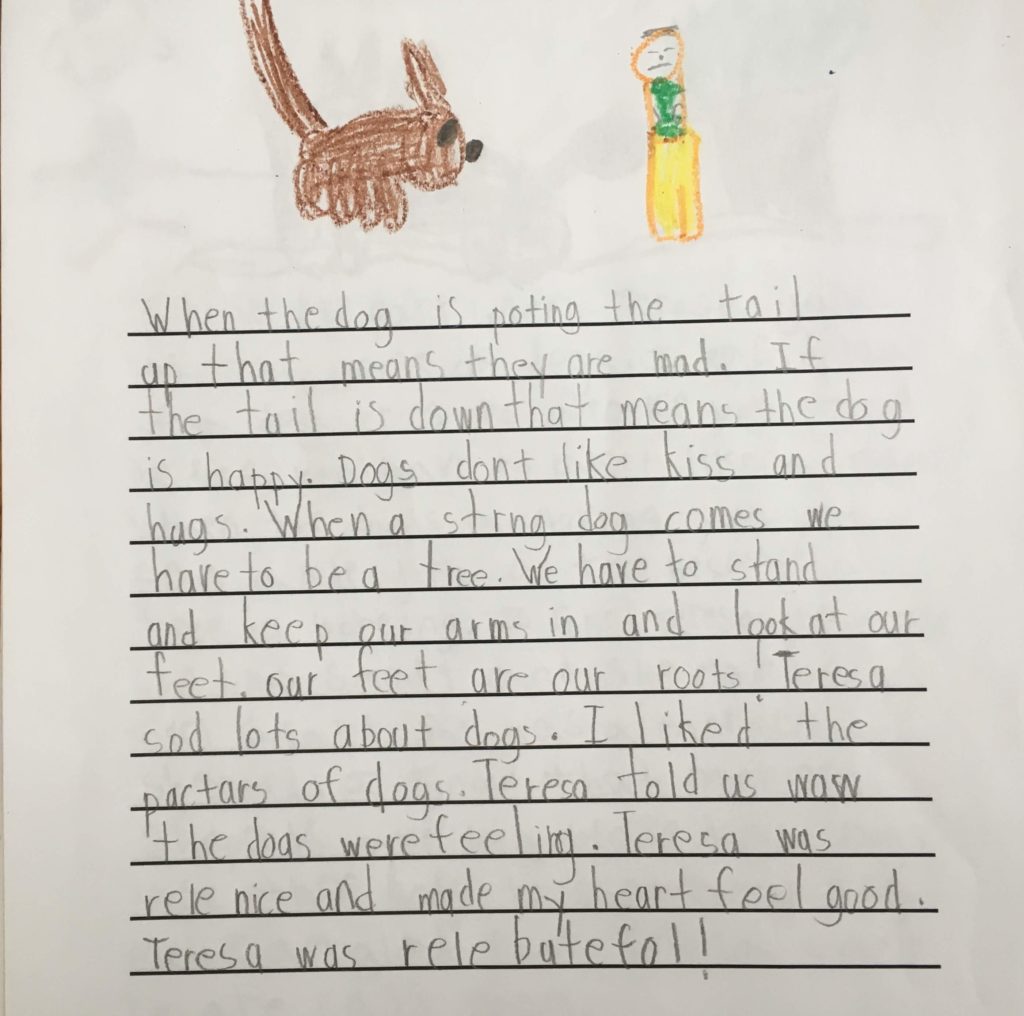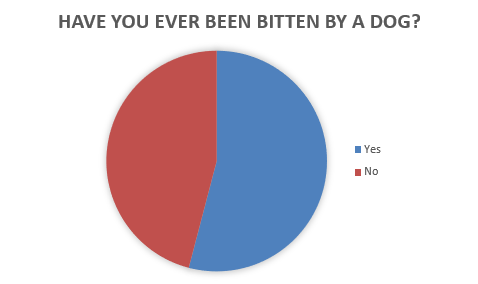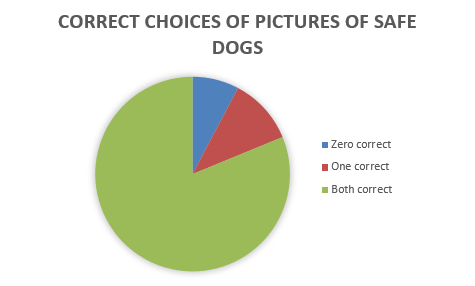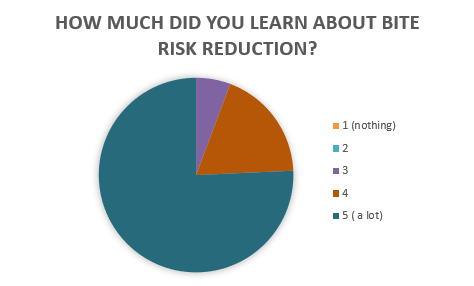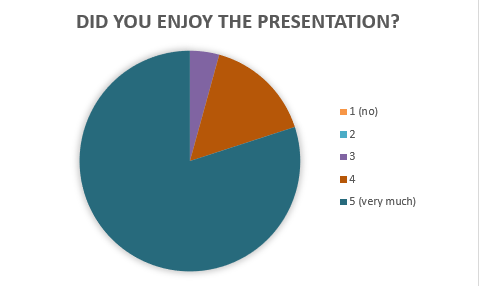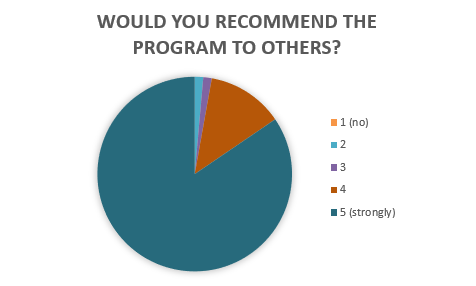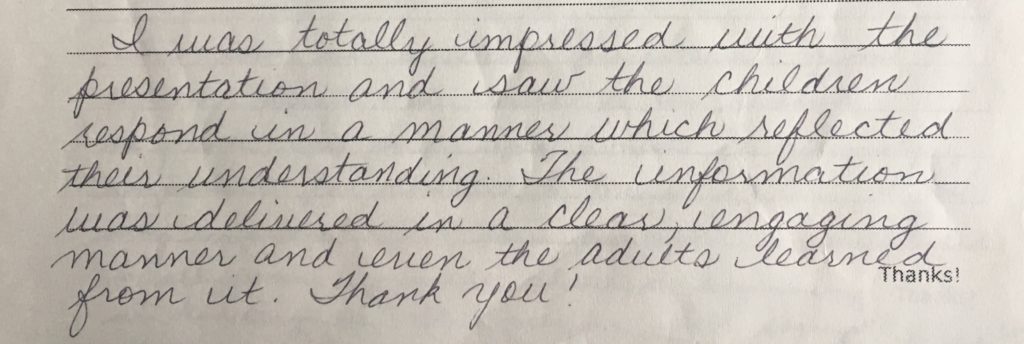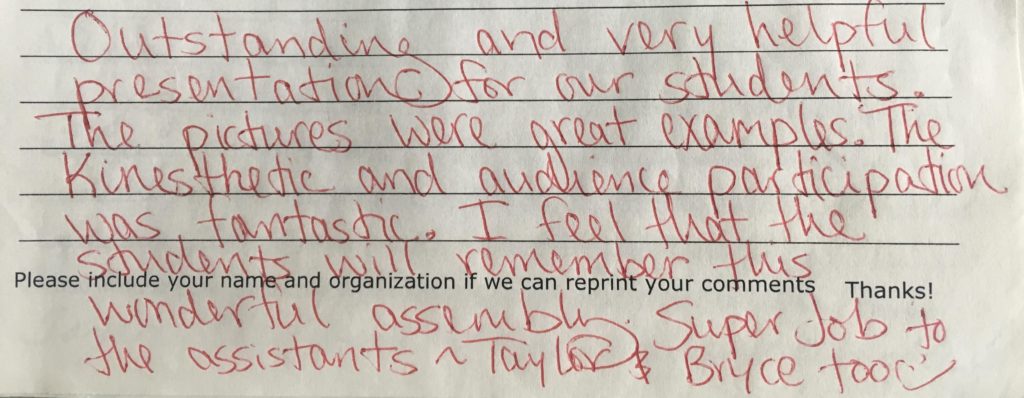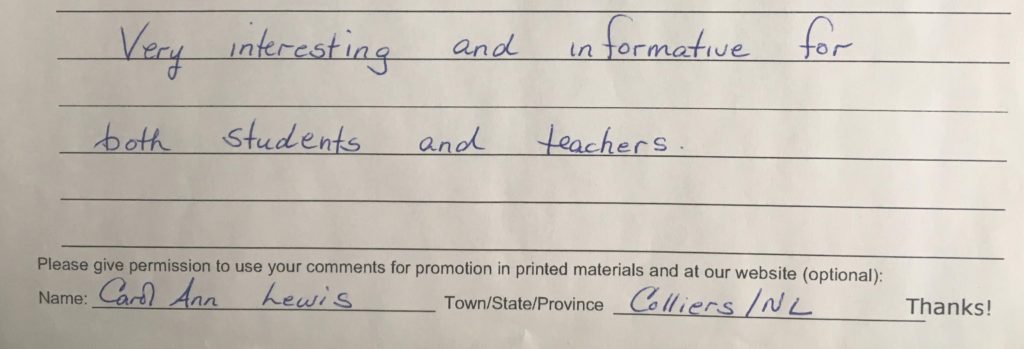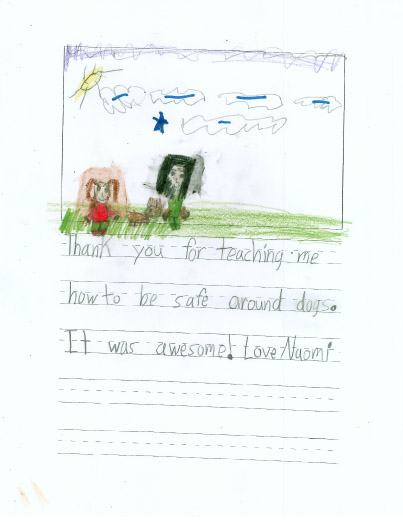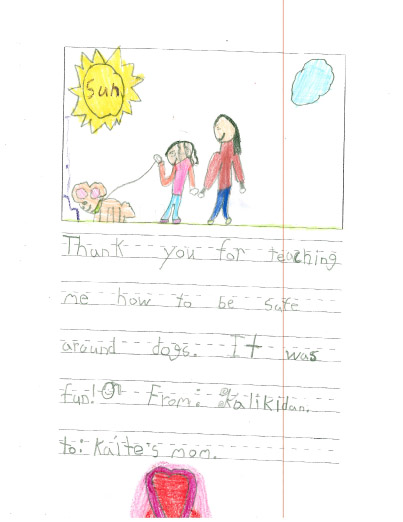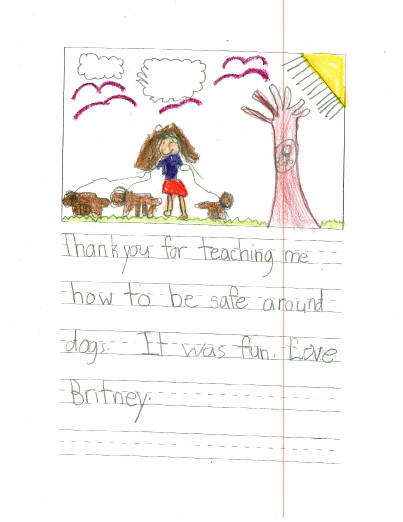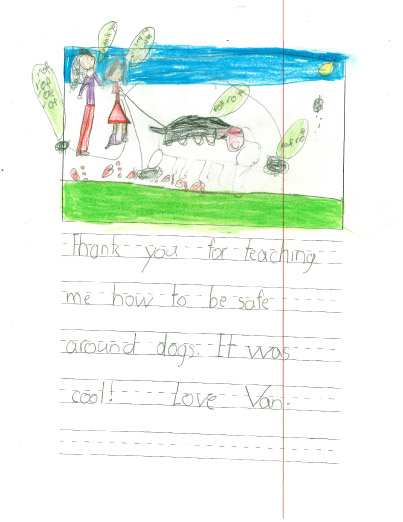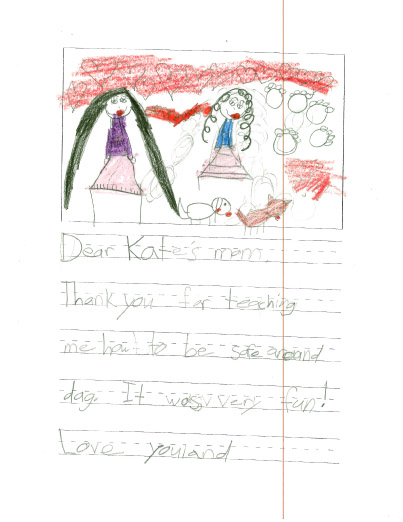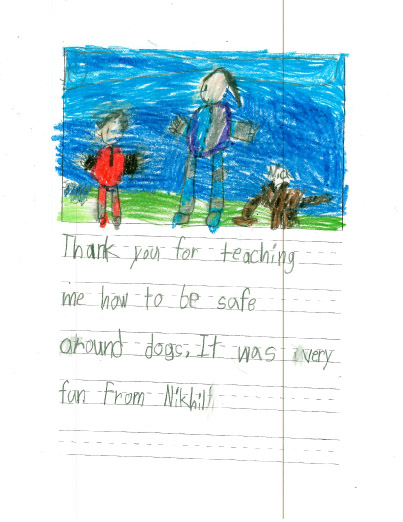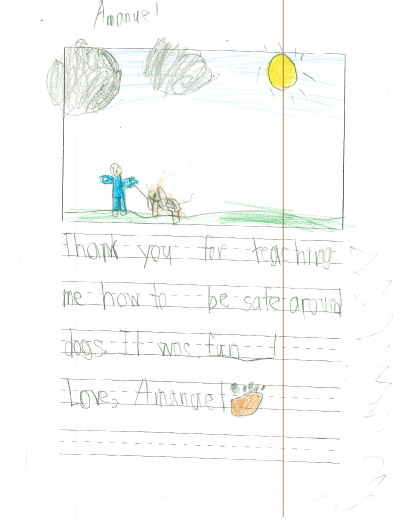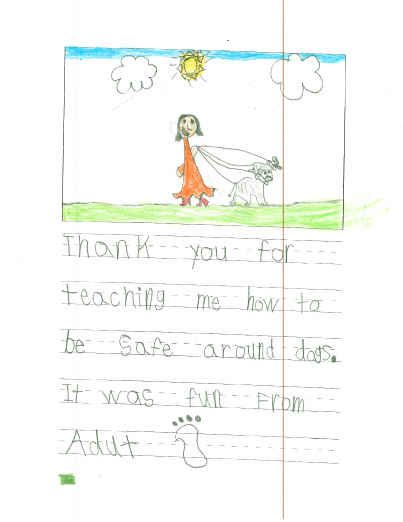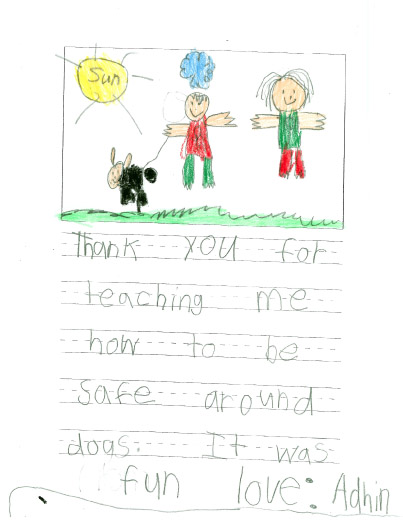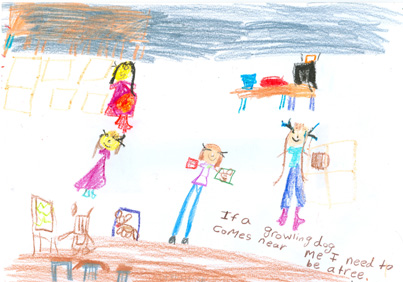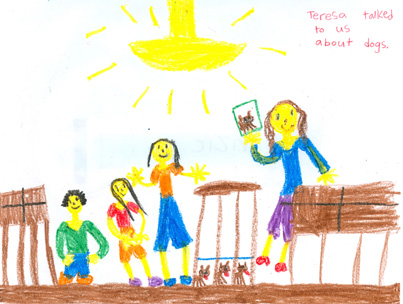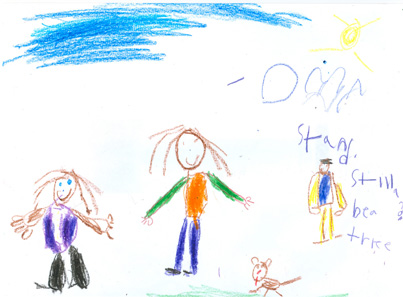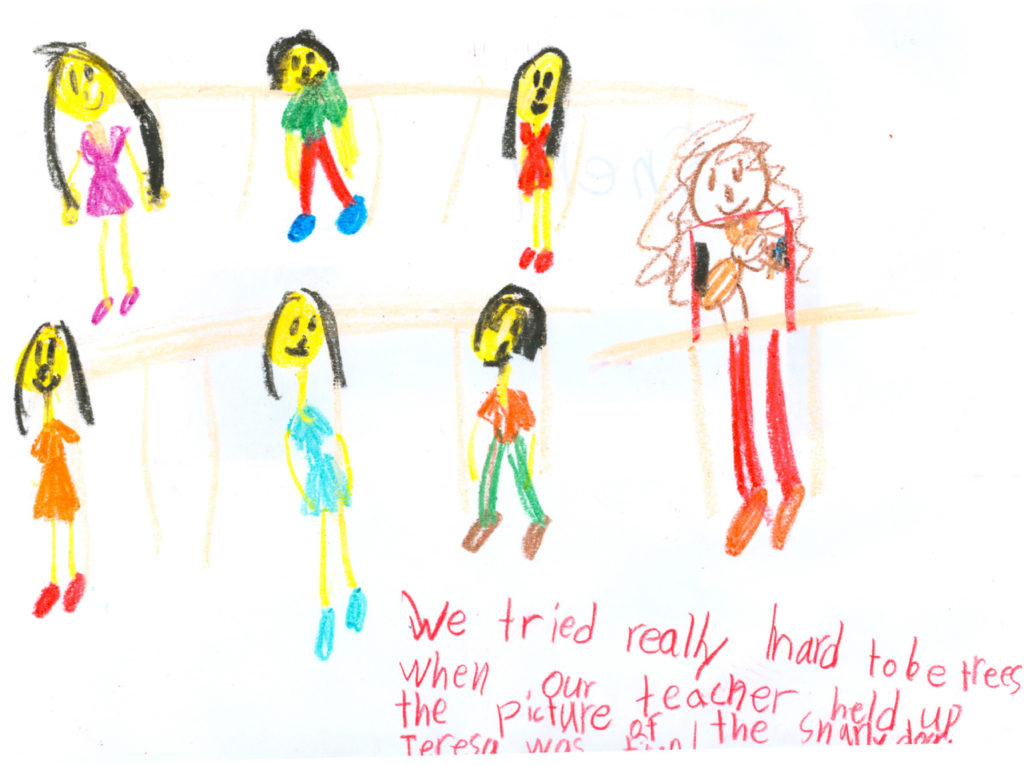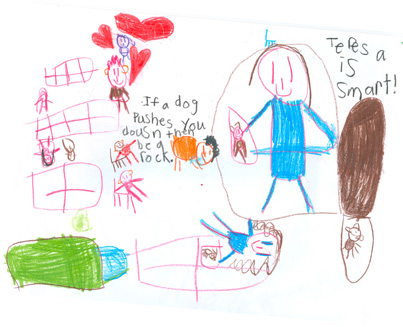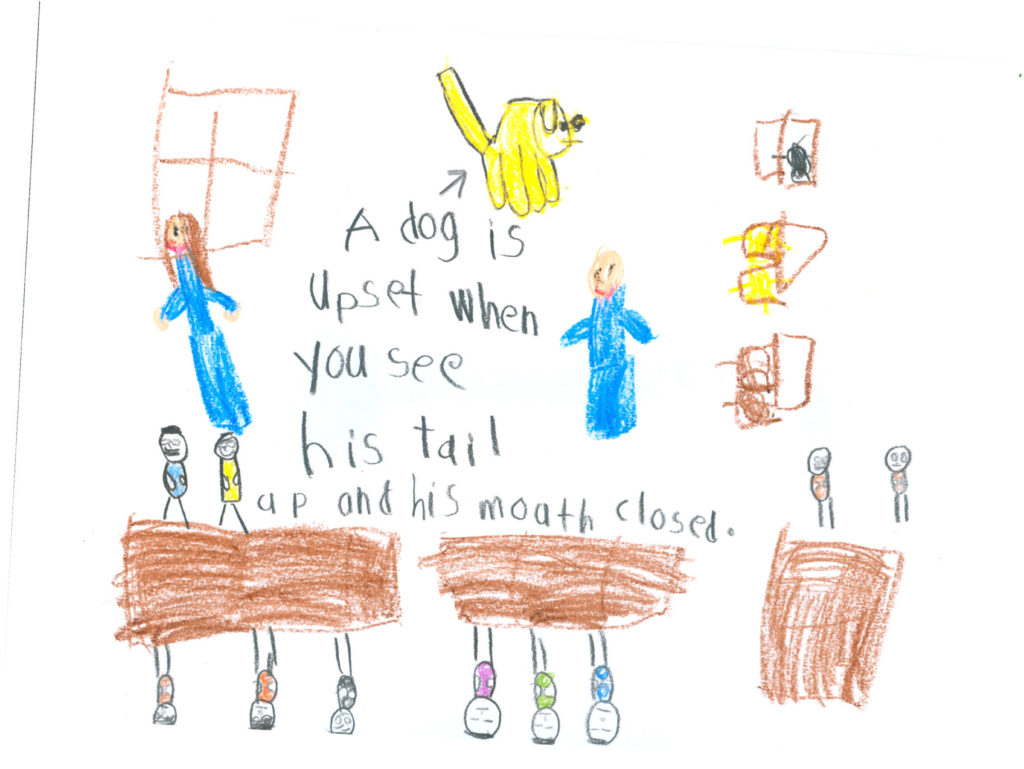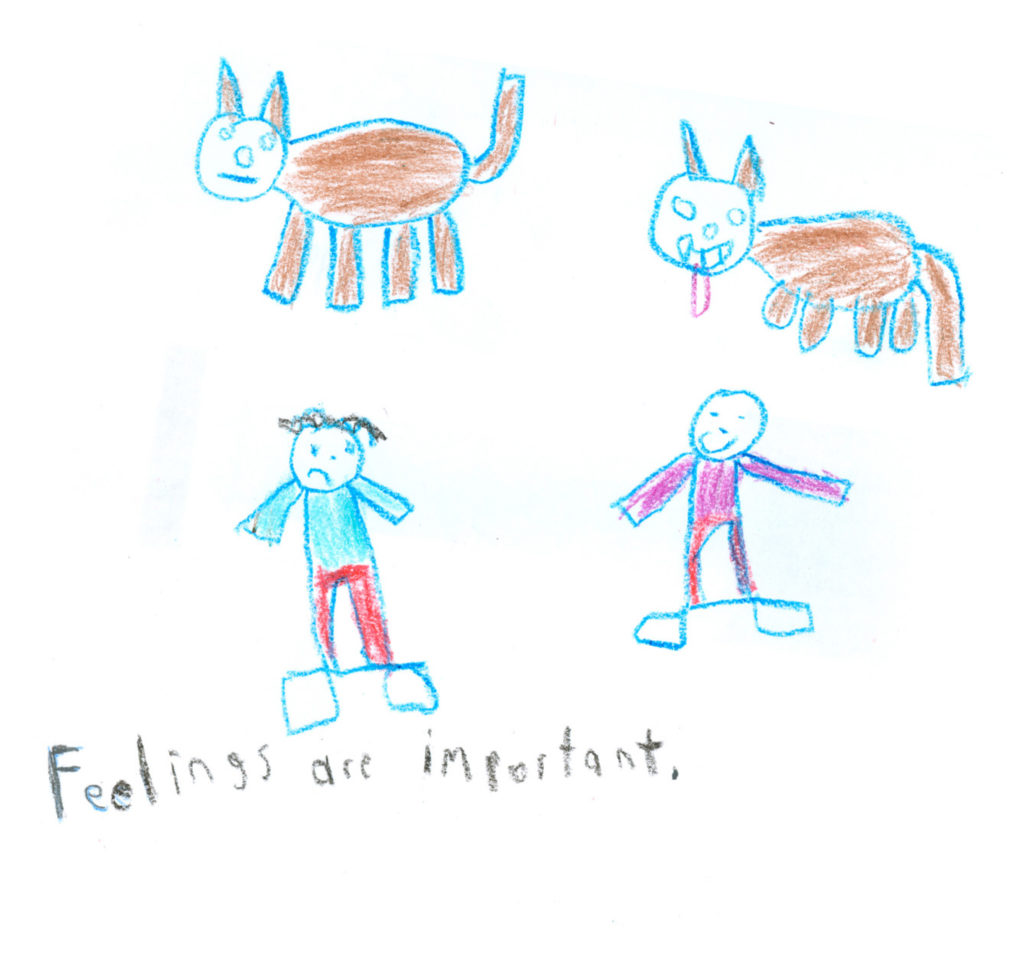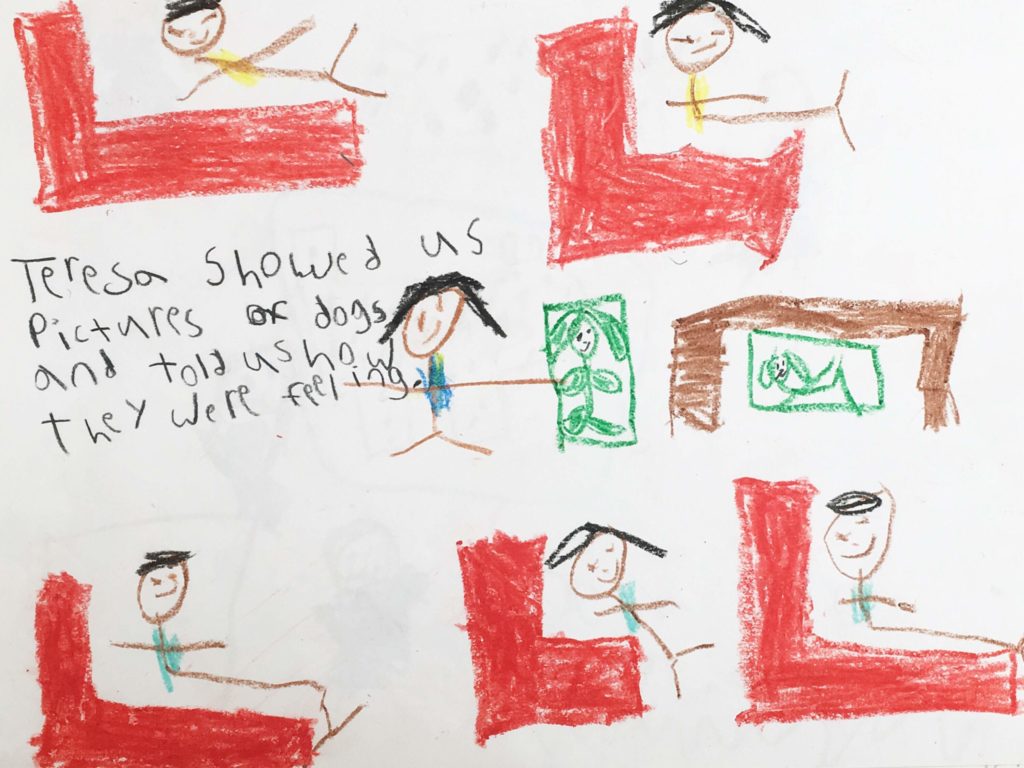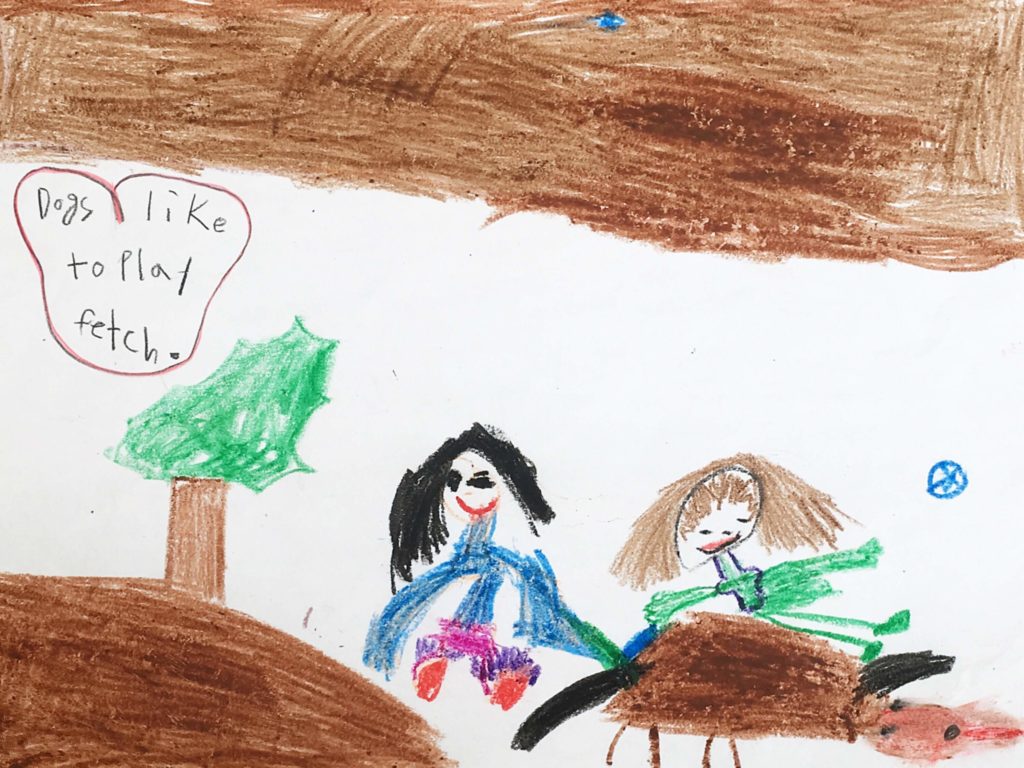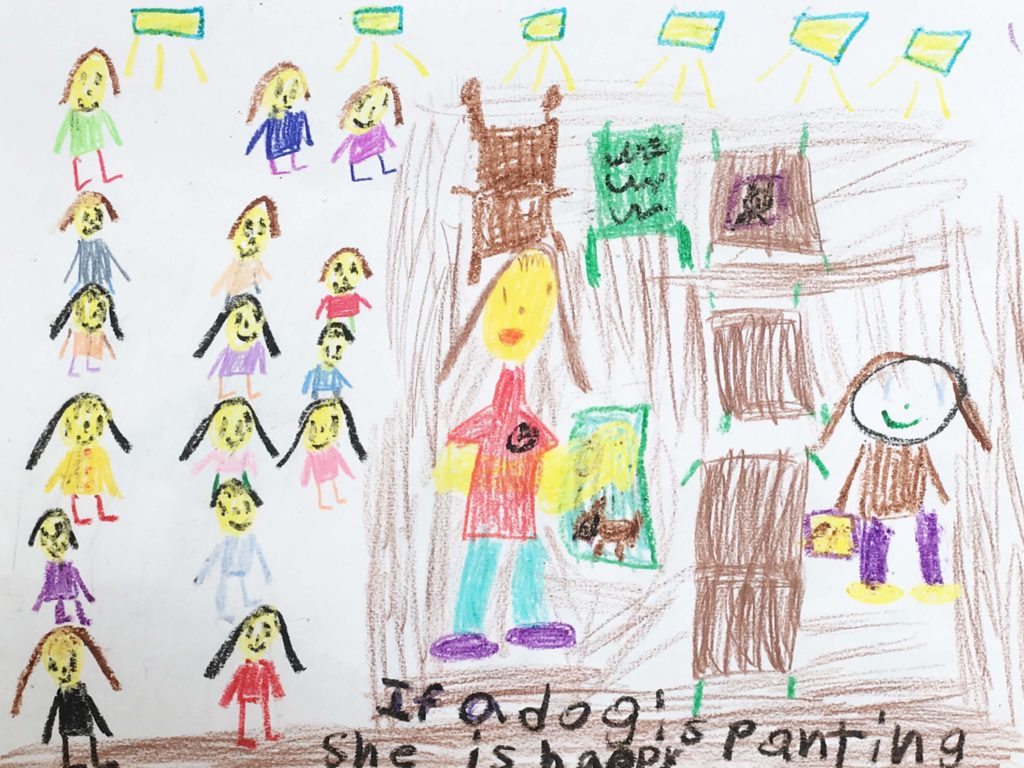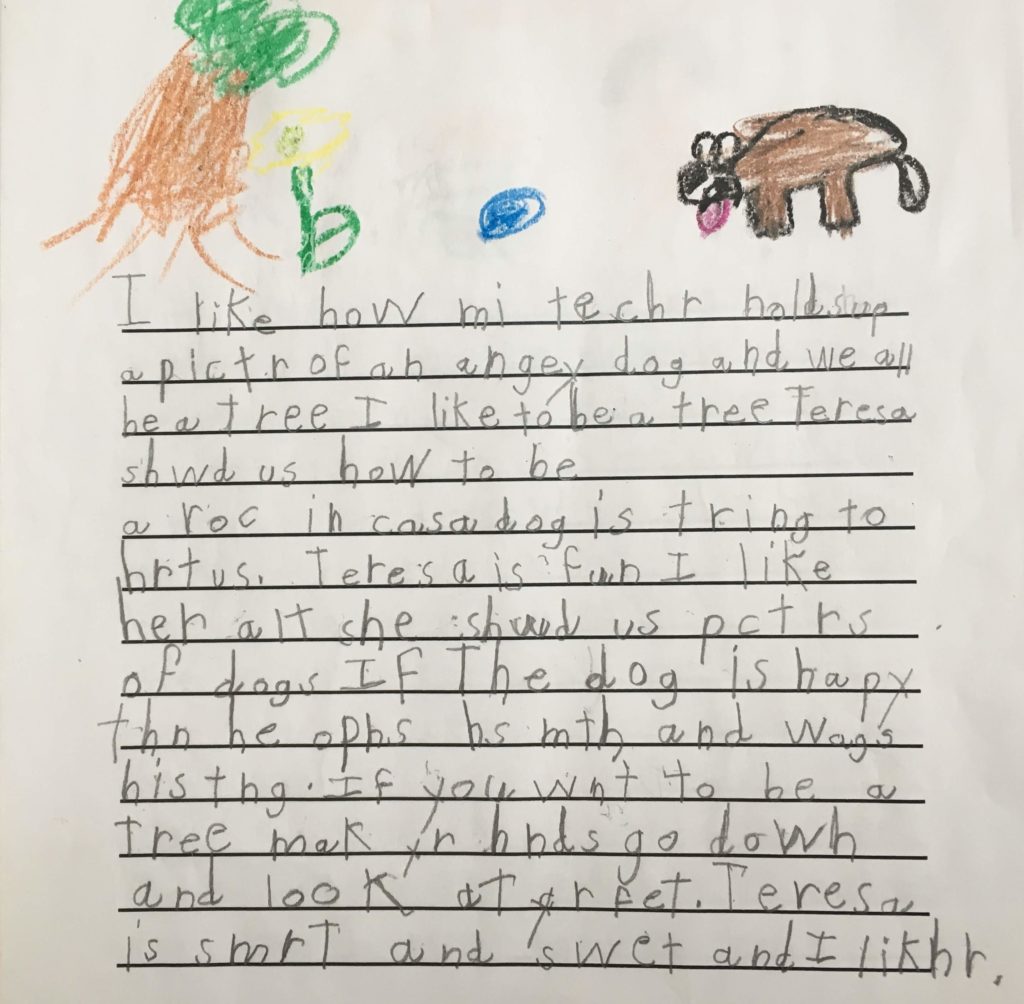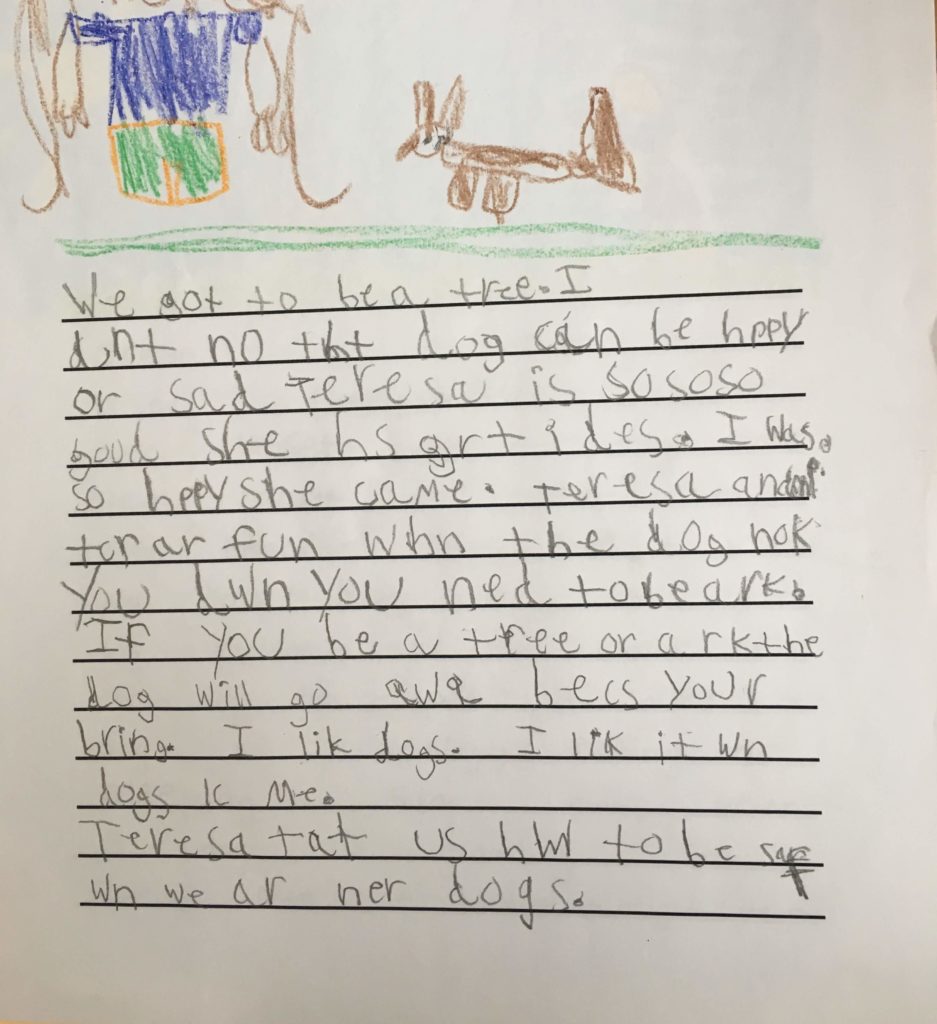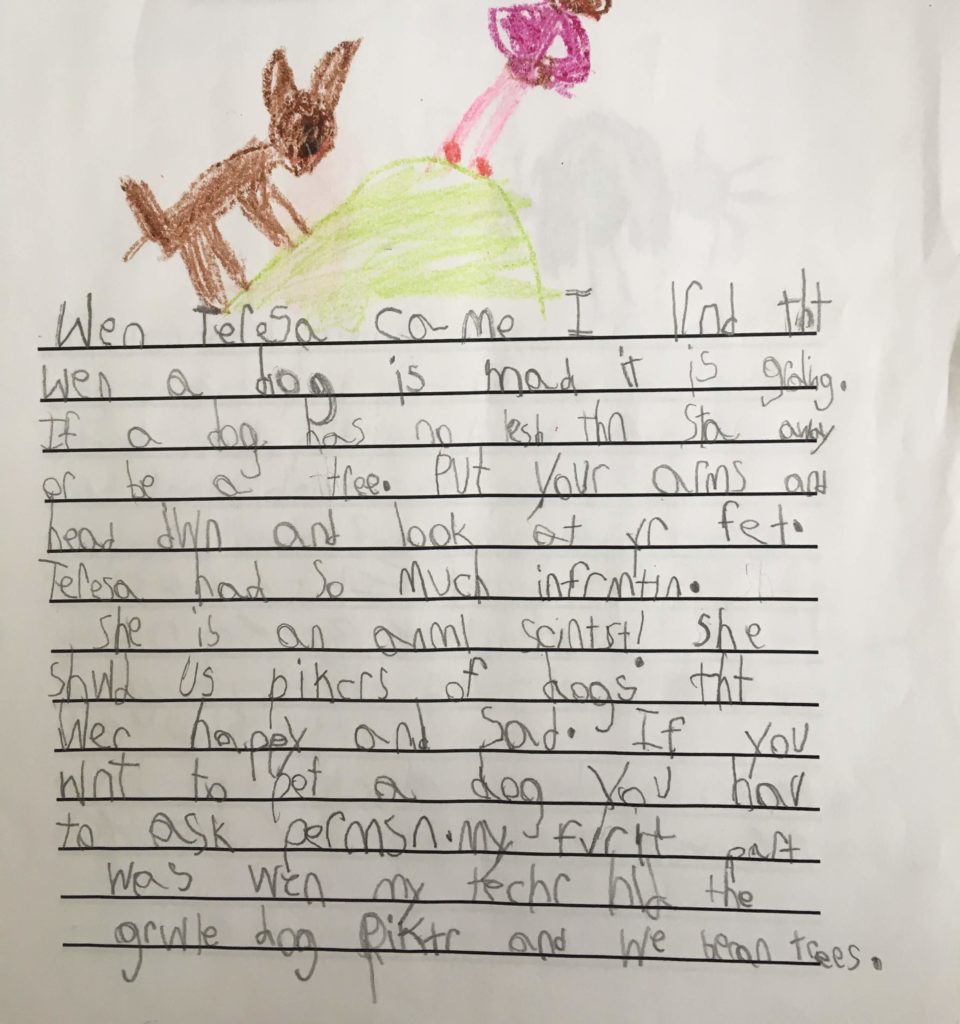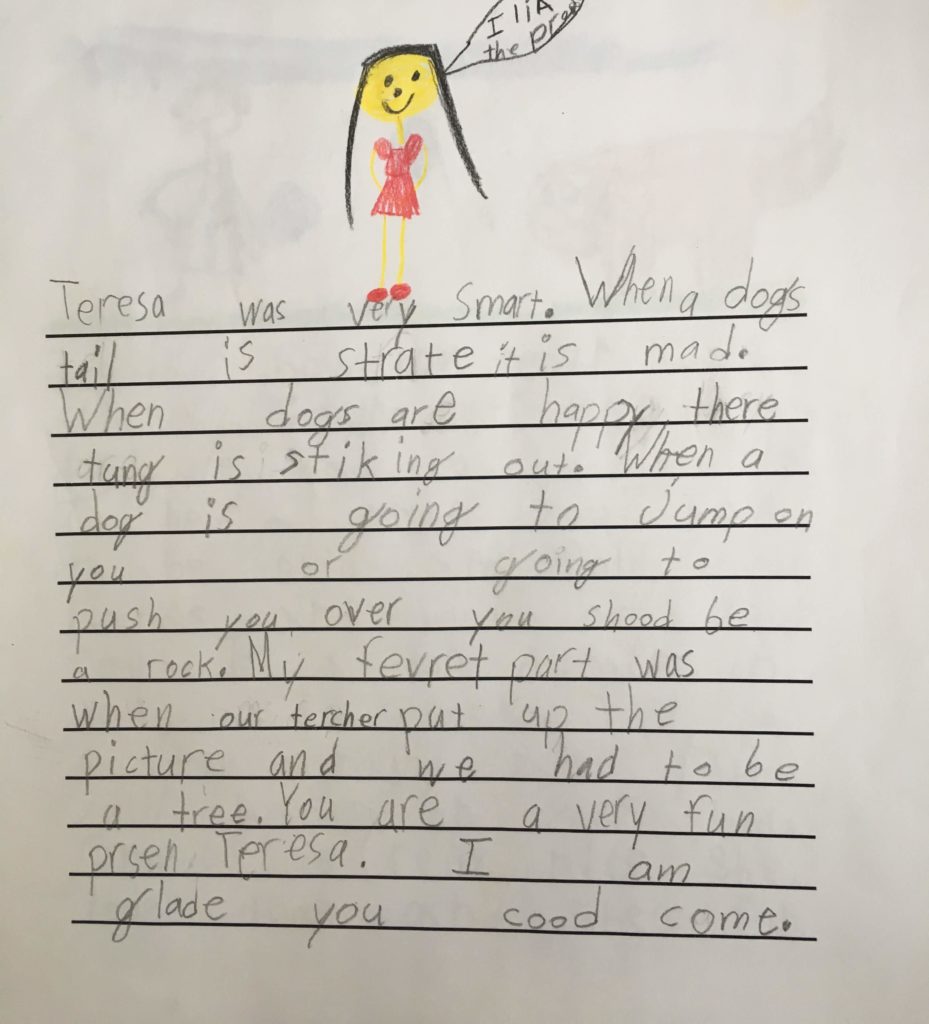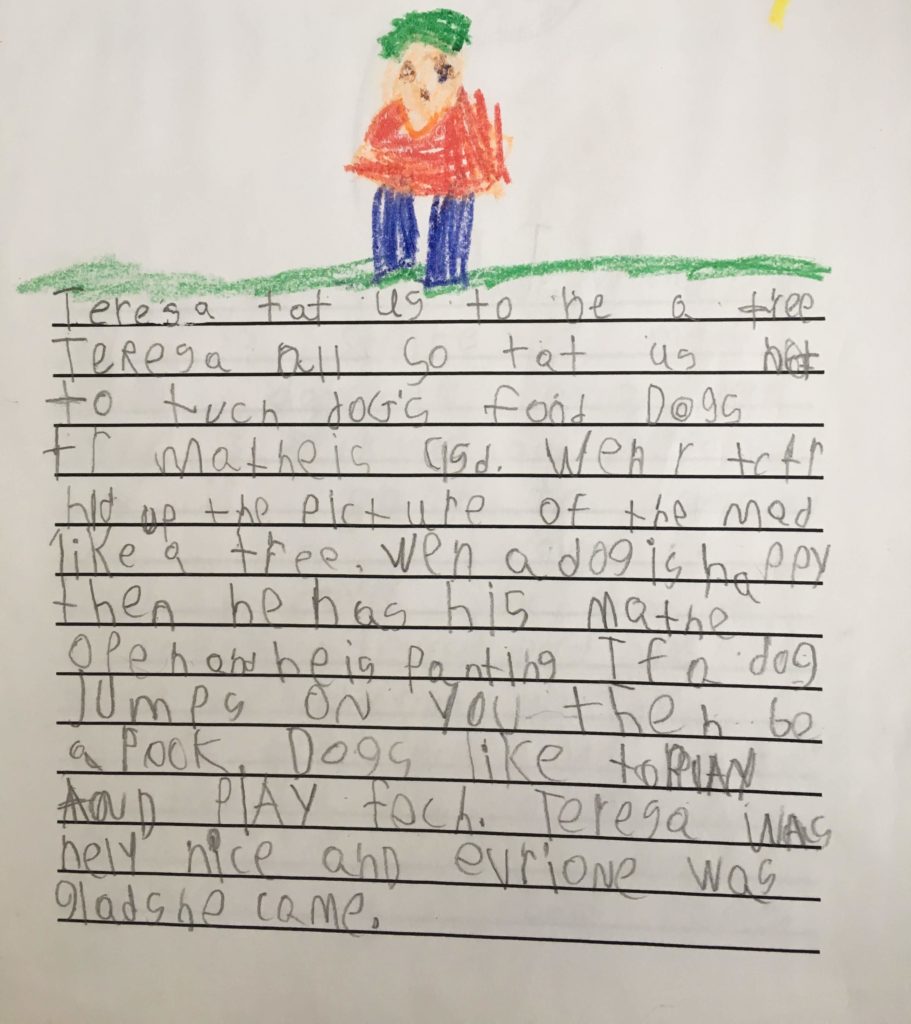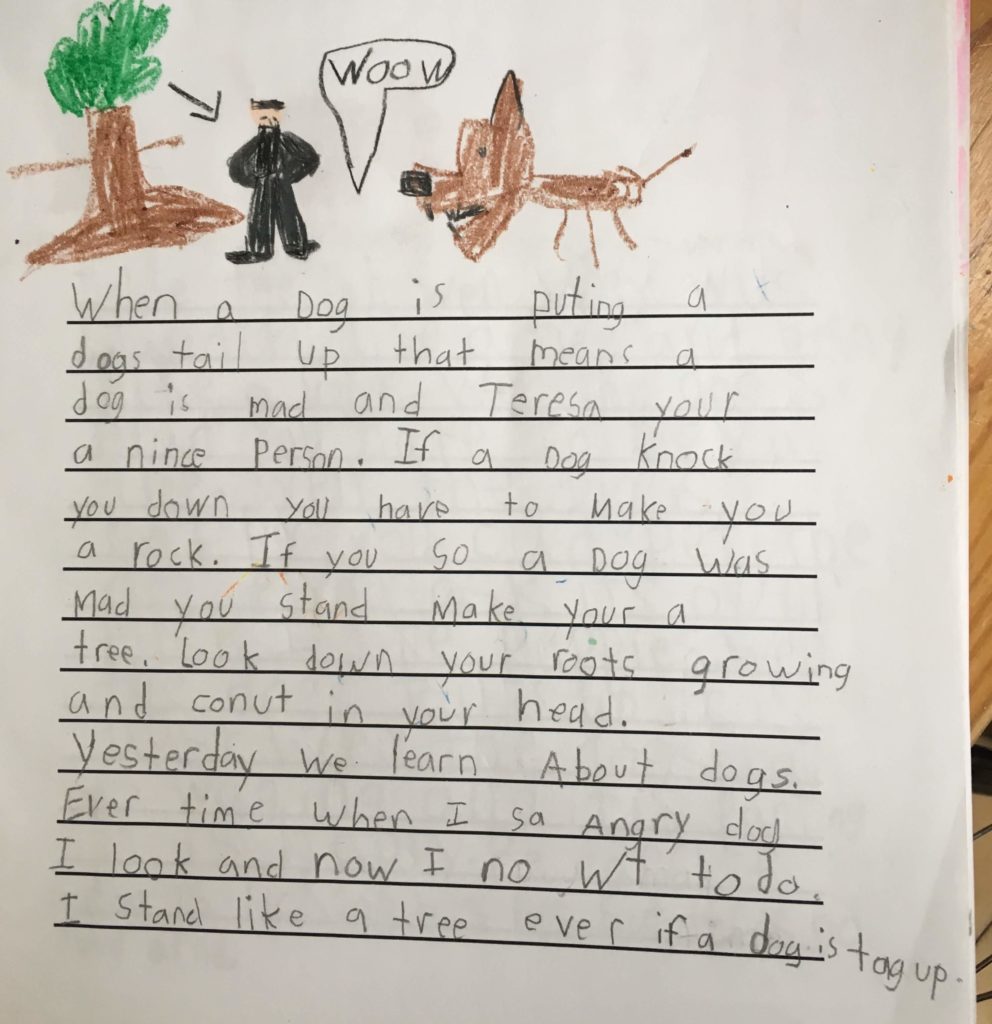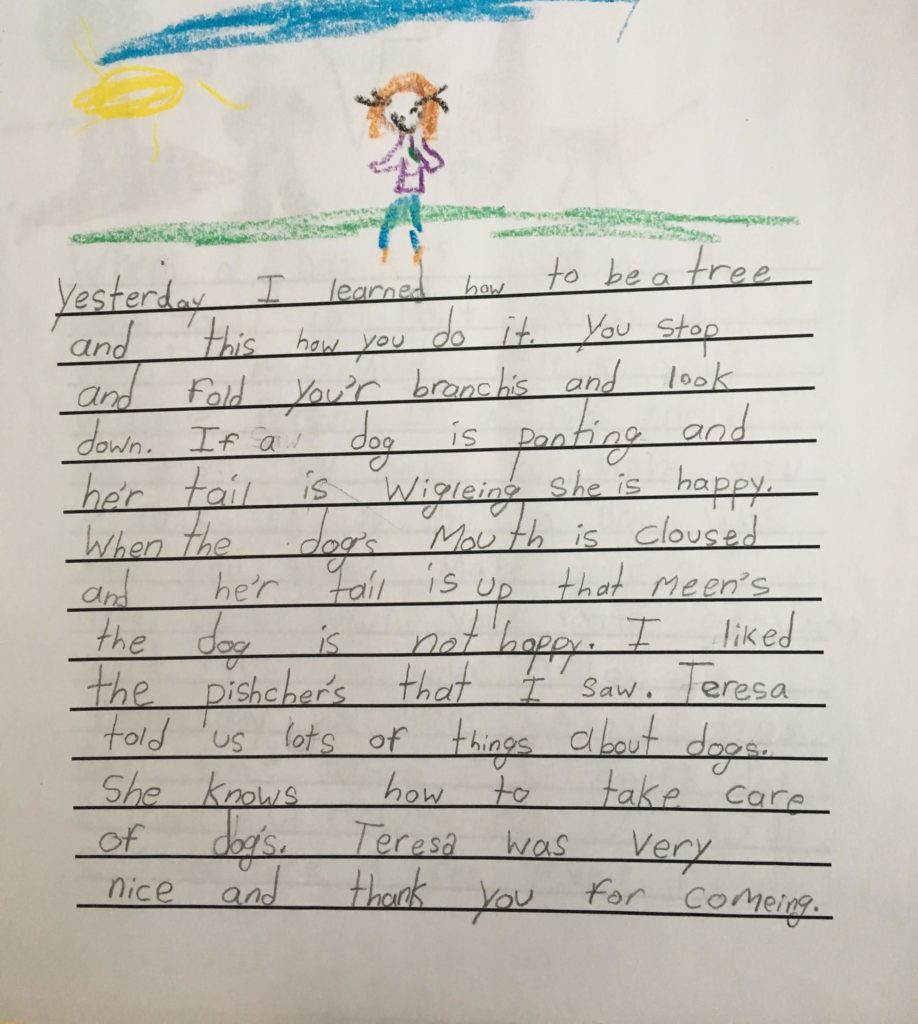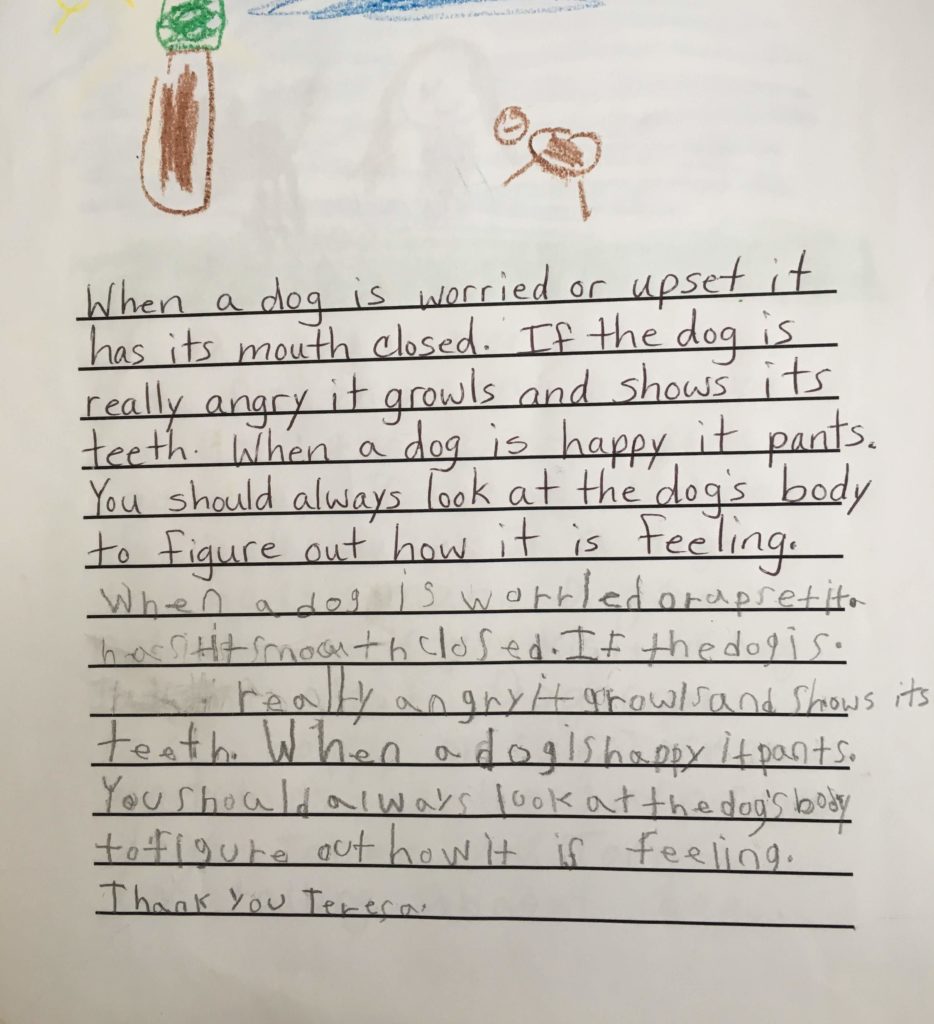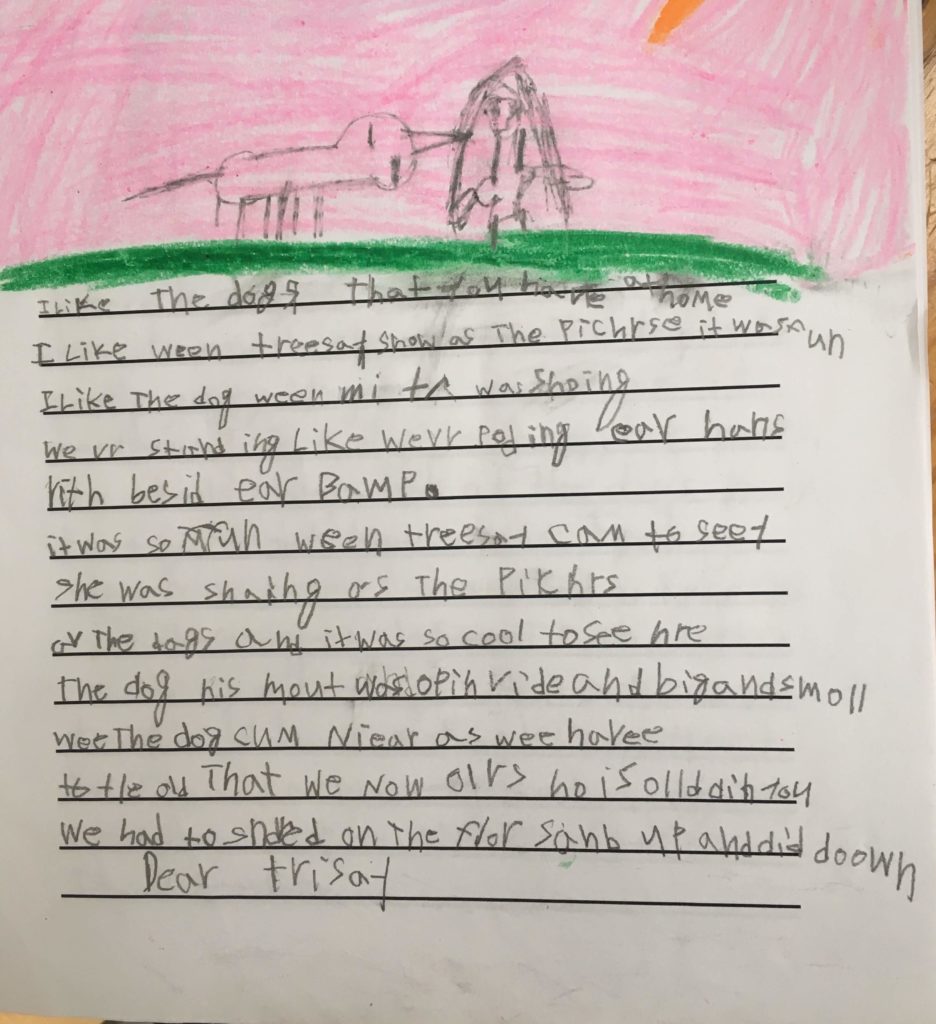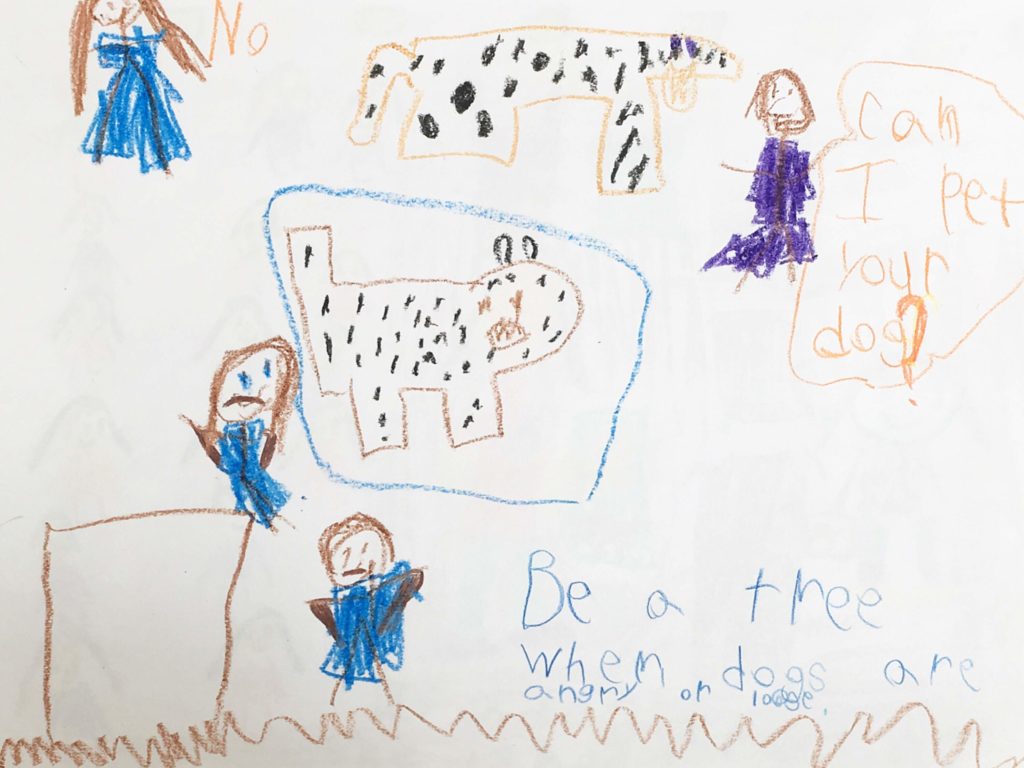Four Versions of the Kit
Price: $60
Contains the physical kit PLUS PowerPoint. Ships to Canada and USA only.
Price: $30
Contains PowerPoint only.
* no physical product is shipped
Price: $40
Contains all the kit files suitable for printing PLUS the PowerPoint.
* no physical product is shipped
Doggie Detective Teacher Kit
Do you want to make a big impact improving the lives of kids and dogs in your community? The Doggie Detective Teacher Kit gives you everything you need (and nothing you don't) to present a fun and interactive program that's simple and teaches kids the important facts they need to understand dogs and how to act safely around them. You'll be giving the kids positive messaging, teaching them what TO DO as
opposed to what NOT to do. You'll be giving them strategies that are easy to do
and easy to remember.
You can be confident knowing that this is the original teacher kit brought to you by Joan Orr and Teresa Lewin (Doggone Crazy cofounders) and Jennifer Shryock of Family Paws Parent Education, tested and reviewed by experts and used with an estimated 1 million kids worldwide.
The kit is for:
What is a Doggie Detective?
A Doggie Detective is someone who can read the clues and assess the situation around dogs. Detectives don't use just one clue to solve a case, they gather many clues. All kids can learn the basics of dog body language and put together the clues to decide whether a dog wants to interact with them or not. The original concept and rhyme
(shown here)
to help kids remember the clues were created by Certified Canine Behavior Consultant and Special Education Teacher Jennifer Shryock of Family Paws.
The Doggie Detective program covers the main signs that kids need to look for in the dog's eyes, ears, tail and muzzle to tell how he might be feeling. This covers only the most important clues and does not include extra information that can be confusing or distracting for kids.
The program also covers how to act around dogs, when to leave a dog alone, what to do if a strange dog comes near or any dog is getting too frisky and the importance of asking permission and not talking to strangers, even if they have a cute dog.
The program is short, fun and interactive, gives kids opportunities to practice what they've learned and uses photos of real dogs.
What You Get with Your Kit
Tool Posters (Heavyweight card stock)
Five 11 x 17 posters showing the tools that kids have in their heads to use in keeping themselves safe around dogs.
PDF with Handouts
You'll also get a download with additional materials that you can print.
Optional PowerPoint Presentation
For those times when you're presenting to a larger group or you don't have the physical kit handy you can use the PowerPoint version. The script is in the speaker's notes.
Watch the video to see the presentation with 2 sec on each slide. You'll have control over the animations and the time spent on each slide.
When the strange dog appears everyone should stand like a tree until it goes away.
Watch the Presentation in Action
The Presentation Part
The Games Part
Four Versions of the Kit
Price: $60
Contains the physical kit PLUS PowerPoint. Ships to Canada and USA only.
Price: $30
Contains PowerPoint only. No physical product is shipped.
Price: $40
Contains all the kit files suitable for printing PLUS the PowerPoint. No physical product is shipped.
What Some Kids Had to Say
What the Experts Are Saying
Hats off to the best educational package I have seen in years and a great public service that goes a long way to getting the message out about dog bite prevention and working toward eliminating dog bites to our children.
Lisa Grey
Canine Behavior Consultant and Specialist; Bite Prevention Educator with BCSPCA (former); Senior Trainer – Canines with a Cause; Senior Instructor – Adolescents at Risk and Canines Ontario
I have reviewed the materials from this program and will be utilizing this material when teaching the second graders of Longmont, Colorado. The materials provided are great tools in teaching animal safety.
Robin Breffle
Community Service Office, Animal Control, Longmont Police Department, Longmont, Colorado
My experience as a classroom teacher of 35 years taught me that children learn by doing, practising and playing. This program is a great teaching tool. Lots of role playing and repetition until the children have a patterned response to an aggressive dog. Fast paced and fun.
Sherri Utter
Retired Elementary School Teacher; Animatch Volunteer, Quebec, Canada
As a Canine Behavior Consultant and Special Education Teacher, I am very impressed with the Doggie Detective program. This fun and interactive program involves kids every step of the way as they learn the tools to make safe choices around familiar and unfamiliar dogs. I am impressed when I return to the classes several weeks later and the kids still remember all of the tools and can tell me some things that dogs do that indicate they may be stressed. This program empowers kids to make better choices through awareness and education. The kit comes with beautiful clear poster-sized photos that are helpful for teaching children and adults alike. The easy-to-follow script is conveniently printed on the back of each poster to help the presenter stay on track and be at ease during their presentation. This really helps to minimize tangents and stay focused on the key points of the presentation.
Jennifer Shryock
Certified Canine Behavior Consultant, Creator of Dogs & Storks Workshop, Owner of Family Paws, Cary, North Carolina
Yes, We Have Data!
Survey Results from 1,178 7-10 Year OIds
Frequently Asked Questions
What is the difference between the Doggie Detective Teacher Kit and the Be a Tree Teacher Kit?
The Doggie Detective Kit is the same as the original Be a Tree Teacher Kit manufactured by Doggone Crazy and sold under that name from 2002 to 2017. The name has been changed to Doggie Detective, but the contents of the kit remain the same. The Be a Tree trademark was acquired by the organization Doggone Safe, and they now market a different version of the Be a Tree kit with significant changes from the original. The new version contains posters with cartoon images with many text labels as well as additional content. The creators of the original kit had no input into these changes. You can visit the Doggone Safe website and also scroll back through the images on their Facebook page to see the current version and the pricing.
How long does the presentation take?
The presentation part takes about 15 minutes. The games/activities part can be a short or as long as you like. You can repeat the same role play scenarios with different groups of kids until everyone has had a turn if you wish.
What age is it aimed at?
The Doggie Detective program is ideal for children in grades 2-3 and is suitable for up to grade 5 and for younger children as well. The program has been tested with junior kindergarten up to grade 5. Individual presenters can gauge the level of the audience and adapt the level of detail accordingly. We have used the program with veterinary students and college level veterinary technician students to teach about dog behavior and even they learned a lot from it. We conducted a survey of 71 teachers and parents of kids age 7-10 and 100% of them felt that the material was age appropriate. The program was reviewed by several elementary school teachers and early childhood educators to ensure that the content and level of detail is appropriate.
Who created the Doggie Detective program and has it undergone peer review?
The Doggie Detective program was created in 2002 by Joan Orr and Teresa Lewin for Doggone Crazy. The original program was developed over a five year period with extensive testing and revision along the way. Many experts have reviewed the program and their input has been incorporated. Reviewers have included professional animal behavior specialists, veterinary behaviorists, general practice veterinarians, dog trainers, elementary school teachers, early childhood education specialists, humane educators, humane society professionals, social workers and mental health professionals.
An estimated 1 million children have experienced the program (originally named Be a Tree), thanks to the hundreds of dedicated presenters worldwide.
The Doggie Detective program has the support of several veterinary and veterinary technician associations. It is the only dog bite prevention program to have received the support of several major professional organizations. The Ontario Veterinary Medical Association, the Canadian Association of Animal Health Technologists and Technicians, the Saskatchewan Association of Veterinary Technologists, the Saskatchewan Veterinary Medical Association and the Ontario Association of Veterinary Technicians support the Doggie Detective program.
Does the material covered in the Doggie Detective program fit into the school curriculum?
Yes the Doggie Detective program fits in with the pets/animals part of most primary school curricula. Suggested follow-up activities that the teacher can use that apply to aspects of math and writing are included in a PDF download with the kit.
Why do you use only photos of real dogs and no text on the posters?
Studies have shown that kids learn better from realism than from cartoon drawings. There is no text on the posters because text adds additional distraction. The presenter is only pointing out one or two main features on each poster so as not to overwhelm the learners with extraneous detail. There are lots of other subtle body language signs that we could teach about, but these are not necessary for kids to know about. Experienced teachers know that keeping it simple and including lots of repetition and opportunity for practice is the best way to teach.
Panting can be a sign of stress in a dog - why do you tell children that panting dogs are happy?
A panting dog is dealing with the stress by panting. A stressed dog that is not panting is much more dangerous because it has no mechanism to relieve the stress and is therefore more likely to react. Not all stress is bad stress. The dog might be waiting for a child to come and say hello. The waiting and wondering causes mild stress and the dog starts to pant. "Are we going for a walk?", "Are you going to throw that ball?", "Am I getting the cookie?" These are all circumstances that will cause panting due to mild stress and anticipation. We are trying to keep things simple for children. They obviously cannot be expected to tell the difference between a dog panting under mild stress or a dog panting with rapid frantic breaths that indicates extreme stress (still a dog less likely to bite than a highly stressed dog that is not able to pant).
Other things that the children learn during the program should prevent them from interacting with a dog panting out of extreme stress. They are taught to stand sideways and allow the dog to come to them and sniff their fist. A very nervous dog is apt to move away and not come forward to sniff - so they would leave that dog alone. They may also see the half moon eye or the fore paw lift and realize that the dog is anxious. They are taught that if the dog stops panting when they approach it, that the dog does not want to meet them. Hopefully, handlers whose dog are very anxious will say no, when a child asks to pet the dog.
So for the most part a panting dog is a dog waiting with happy anticipation for something good to happen, or at least is a dog that is dealing with its stress. The panting/not panting differentiation is simple for children and immediately rules out many dogs that they may otherwise have wanted to pet and gives them a way to decide whether their own dog (who is the one most likely to bite them anyway) is open to interaction with them. We also teach that children should ask the dog handler to tell the dog to sit before they meet it. The cue "sit" is a stress reliever for most dogs because it is familiar and generally has a positive association and gives the dog some control of the situation. A dog that does not sit for the handler is not under sufficient control for a child to pet. An extremely anxious dog is unlikely to follow instructions and is ruled out on that basis, whether panting or not.
Why do you discourage presenters from bringing real dogs into the classroom?
Live dogs distract the children and the majority of dogs do not enjoy handling by large groups of children. Even certified therapy dogs, service dogs, guide dogs and dogs that have passed the canine good citizen test are not evaluated for their ability to handle crowds of children or to be petted by many children. Service dogs or guide dogs required by presenters should be placed where they cause the least possible distraction and the children should be told that the dog is working and that they will not be able to pet it.
When we started doing dog bite prevention sessions in classrooms we used to take our dogs. These were highly trained and socialized service dogs - Newfoundlands and a German Shepherd. They were very happy to be petted by the first 25-30 children and after that they started yawning or licking their noses or trying to lie down facing away from the children. Since we had just taught the children that a dog showing these signs does not want to be petted, it was contradictory to allow the petting to continue, even though the chance of these dogs actually being stressed enough to bite was negligible. Since most children wanted to meet the dogs, this caused a problem. We also found that many children are distracted by a live dog and they want to look at the dog and ask questions (how much does he eat? how much does he weigh?) that were not relevant to the topic of the presentation. We have discussed this issue with many other experienced bite prevention educators and all agree that live dogs do not have a place in a bite prevention seminar. Delta Society Australia uses a stuffed dog as do others and this is a great solution.
The classroom is not the place for people to show off how nice their dog is, or how nice their breed is. Surrounding a dog with children sets the dog up to fail. If dogs are taken into the classroom as part of another presentation separate from Doggie Detective, we recommend that this be done as a demonstration only (grooming, tricks, obedience, service work etc) and that the children be allowed to watch but not to interact with the dog. This will avoid any chance of a dog reacting and hurting a child, will avoid stress to the dog and will avoid giving the children contradictory messages.
We know that many people do not agree with us on this issue, but we feel very strongly and we will not be convinced otherwise.
My dog is a certified Therapy Dog and I have liability insurance through the therapy dog organization - surely this dog is OK to bring to Doggie Detective presentations?
This is probably our most frequently asked question of all. The same answer applies as to the previous question. It is a rare dog that genuinely enjoys the attention of a large group of children. Even therapy dogs are not conditioned for this nor tested for their ability to tolerate this type of situation.
Why do you tell children to fold their hands and look at their feet in the tree position?
Folding their hands gives the children something to do with them and makes them less likely to put their hands up. Some dog bite prevention programs advise putting hands in pockets and backing away (child could trip), or folding hands across the chest. Bringing hands up towards the face like this brings the attention of the dog up towards the face. Keeping hands low keeps dog's head low. Here is a series of photos that illustrates this. The movement of the hands upward attracts the dog to move closer and investigate the hands. The dog's head tends to follow the hands. A smaller dog might even jump to check out the hands. This puts the dogs teeth closer to the throat and face.
We have tested many tree configurations with kids and friendly dogs and overly excited puppies and the less movement the better.
We suggest that children watch their roots grow (look at their feet). This gives them something to look at other than the dog. It gives them a positive image to focus on (roots growing). We also tell them to count in their head to the highest number they know, over and over until help comes or the dog goes away. This gives them something to do with their minds while they are frightened. We have tested looking at feet versus looking ahead with groups of adults. Everyone reported that it is easier not to look at the dog while focusing on your own feet. Every person admitted to sneaking a peek at the dog while trying to look ahead, but not if they were looking at their feet. Children respond much better to specific instructions such as "look at your feet". There is no interpretation involved with this and it is easy to remember. "Look ahead" and "look at something in the distance" or "look up to the sky" are too non-specific and require judgment. In a high stress situation, the less judgment a child needs exercise the better.
Someone suggested to us that it is better for the child to look ahead (but not at the dog) so that they will know when the dog is gone. So we tested this also. Even with your head down a person can see at least 40 feet ahead and to the side, certainly far enough to be able to know if the dog is still in the immediate area. Try it yourself.
I was told to try to block the dog with a book or knapsack if attacked. Why is this not in your program script?
Some dog bite prevention educators do suggest this. We stress that if the child stands still and quiet the dog will most likely go away eventually and may come close, but is unlikely to attack if they are still. The movement of holding out the knapsack or book may be threatening enough to trigger a bite that would not have otherwise happened.
We have had many stories of the tree working even with a moving and pushy dog. Movement is a major trigger and even trying to block with a knapsack etc may backfire since the kids are moving, probably looking at the dog and acting like victims. Some people suggest that if a dog is coming fast and looks aggressive and there is time, then trying to feed it a book or knapsack may be a good idea. But then what? If they move away at that point the dog will most likely leave the object and chase them. If they stay still then the dog may lose interest in the object and approach them again. So there is not much difference here from just standing still in the first place. What if the dog was not intent on biting, but the child thought it was and the object enraged or excited the dog? A bite could be provoked that would not otherwise have happened. Unfortunately if a dog is really intent on attack there is really nothing a child can do to prevent it. This is a rare situation and most dogs do not want to attack. If the dog is predatory, then standing still is the least interesting thing to the dog. If the dog is aggressive then standing still is the least threatening thing to the dog.
No-one has tested this with children in a real-life situation for ethical and safety reasons. We have seen a mock situation in a video in which a child is holding a knapsack and backing away while the dog jumps and barks at him. In this scene the dog does not back off and in fact appears to be getting more excited. There is no evidence that backing away and holding out the knapsack is discouraging the dog from attacking. In this particular situation the child could trip and fall backwards while walking backwards which would almost certainly trigger an attack.
We like to keep it simple and stick to the stand like a tree message, because it really is the most likely thing that will save the child's life and does not require any decision making in a time of extreme stress.
Your program does not talk much about dog bites to the children - why is this?
The Doggie Detective program is designed to prevent the situations that lead to bites. The program uses mostly positive messages and does not intend to frighten children by talking about dogs that might bite them. The program gives children the tools they need to evaluate what the dog is thinking and decide whether that dog wants to meet them. We prefer to have them thinking in terms of whether the dog wants to meet them, rather than whether the dog is likely to bite them. The program teaches them to interact only with happy receptive dogs in appropriate ways under adult supervision. They learn more about what they should look for and what they should do as opposed to what they should not do.
Why do you ask that the dog be sitting before the child pets the dog?
A dog that is not under sufficient handler control to sit on cue is not reliable enough to be petted by a child. This is a very easy way for a child to make a judgment and rules out a great many dogs with a simple step. Perhaps when enough children begin enforcing this rule, dog owners will become more diligent in teaching good manners to their dogs. This idea was suggested to us by Summer Epinger of D.A.F.E.Y. (Dog Awareness for Everyone Including Youth).
Why do you ask the child to allow the dog to sniff their fist in greeting the dog?
It is an important social aspect of dog culture to sniff in greeting. Dogs that are suddenly touched will naturally turn to see who is there and may even snap if surprised.
The child should not stick his fist into the dogs face, but rather hold his fist loosely at his side and be close enough that the dog can lean forward to sniff. The dog is given the opportunity to initiate the interaction. Kids need to have something specific to do instead of being told what not to do, so standing with their fist loose at their side and letting the dog sniff is a good option.
Why do you recommend that the child scratch the dog on the side of the neck?
Most dogs enjoy a scratch on the side of the neck. This does not involve the child's hand coming over the dog's head and keeps the child's face away from the dog's face.
Some bite prevention programs suggest that the child should pet the dog on its back. We have tested this method (with adults) and have found that this can startle the dog causing it to turn toward the child. With a large dog and a small child this results in face to face interaction. Even if the dog already knows someone is there it most often turns its head toward the source of the touch. Many dogs find a hand on the back to be a threatening gesture and try to move away. Some turn and snap without fully investigating the reason for the pressure on their back.
Does standing like a tree work in a real-life situation? Will children remember to do this?
We have had several reports from parents of children (and even adults) standing like a tree in a real life situation. Yes they remember to do it if they have practised it! They get lots of opportunity to practice during the Doggie Detective presentation.
Several presenters have told us that years later when they've gone back to schools, kids will come up and show that they remember about standing like a tree from learning about it in a previous year.
When is it safe for the child to leave the Tree position after an encounter with a dog?
When the dog has lost interest and moved away or when help comes and the dog has been secured. If the child is in doubt they should maintain the tree position. If the child moves and the dog resumes interest then the child should stand like a tree again.
Here's a video that shows a dog losing interest and the regaining interest when the child moves. She should stand like a tree until the dog moves away completely and then she should move slowly. If the dog comes back towards her she should stand like a tree again.
Four Versions of the Kit
Price: $60
Contains the physical kit PLUS PowerPoint. Ships to Canada and USA only.
Price: $30
Contains PowerPoint only. No physical product is shipped.
Price: $40
Contains all the kit files suitable for printing PLUS the PowerPoint. No physical product is shipped.
Four Versions of the Kit
Price: $60
Contains the physical kit PLUS PowerPoint. Ships to Canada and USA only.
Price: $30
Contains PowerPoint only. No physical product is shipped.
Price: $40
Contains all the kit files suitable for printing PLUS the PowerPoint. No physical product is shipped.
Four Versions of the Kit
Price: $60
Contains the physical kit PLUS PowerPoint. Ships to Canada and USA only.
Price: $30
Contains PowerPoint only. No physical product is shipped.
Price: $40
Contains all the kit files suitable for printing PLUS the PowerPoint. No physical product is shipped.







